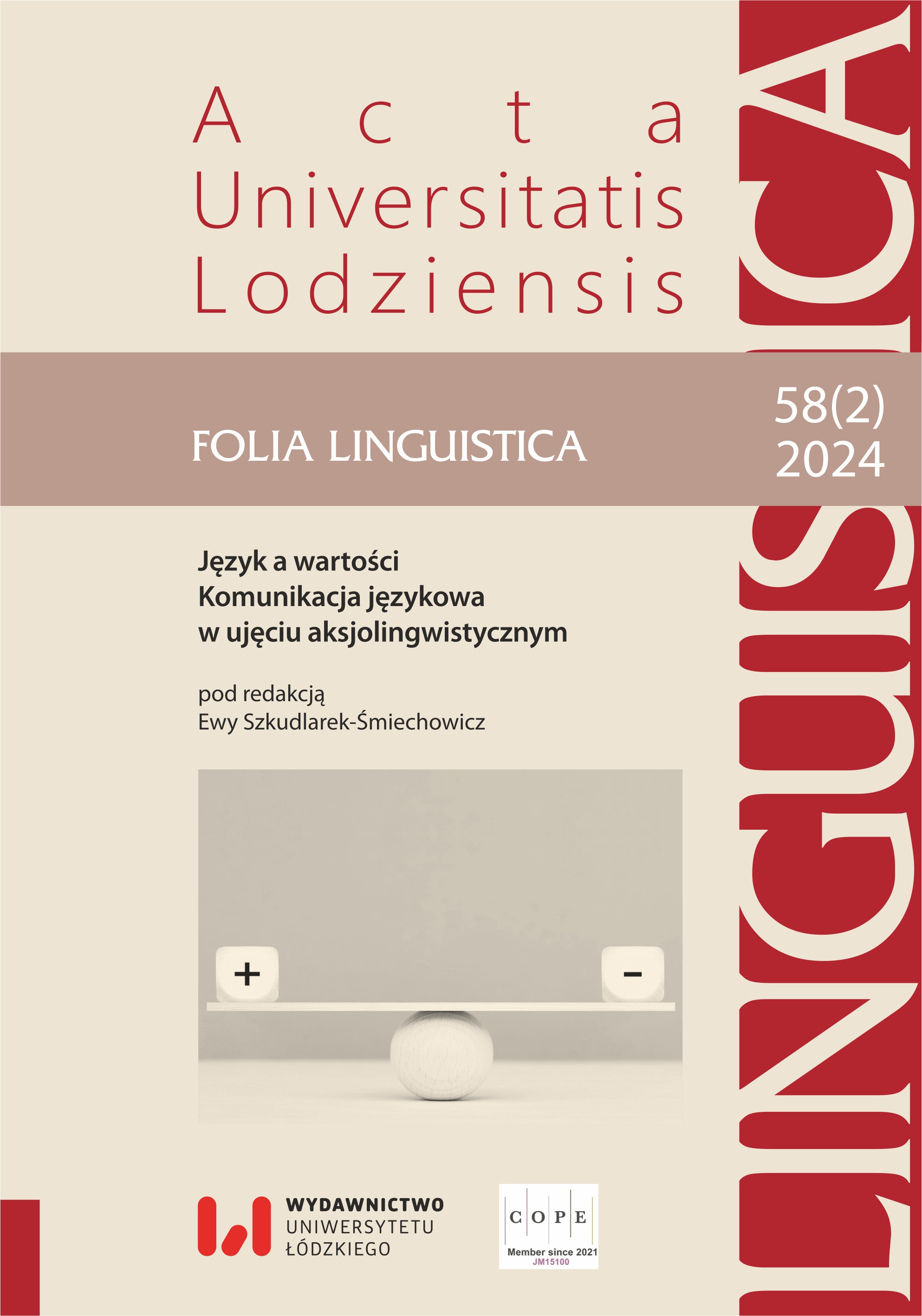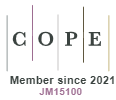Funkcje przytoczeń i role osób mówiących w przekazie dziennikarskim (casus dwóch tekstów: przemocowego i o przemocy)
DOI:
https://doi.org/10.18778/0208-6077.58.2.01Słowa kluczowe:
autobiografia, mowa niezależna, przemoc, przytoczenie, reportaż, trójkąt dramatycznyAbstrakt
Tekst dotyczy funkcjonowania przytoczenia w dwu tekstach związanych z przemocą: Katarzyny Włodkowskiej W redakcji Andrzeja Skworza. „Odliczam aż się rozryczysz i wyjdziesz” („Duży Format”, 25.05.2023 r.) oraz Marcina Kąckiego Moje dziennikarstwo — alkohol, nieudane terapie, kobiety źle kochane, zaniedbane córki i strach przed świtem (Wyborcza.pl, 5.01.2024 r.). Cudze słowa są tutaj wykorzystywane nie tylko w roli materiału konstrukcyjnego, ale także wynikają z rozpoznań gatunkowych, wreszcie decydują o wiarygodności autora i medium. Analiza stylistyczna oraz zawartość treściowa wpływają na przyporządkowanie poszczególnych głosów do odpowiednich osób mówiących zgodnie z trójkątem dramatycznym. W tekście K. Włodkowskiej najważniejszą rolę odgrywa przytoczenie niezależne (zwłaszcza mowa niezależna), natomiast w publikacji M. Kąckiego mowa zależna. Ponieważ oba teksty różnią się perspektywą narracyjną, dostrzeżono także problematykę związaną z ulokowaniem przytoczenia: są to przytoczenia pierwszego stopnia — w narracji oraz przytoczenia drugiego stopnia — w innych przytoczeniach. Role osób mówiących zostały uporządkowane w ten sposób, by uszczegółowić kategorię uczestnika opisywanych zdarzeń. Triada: ofiara, sprawca, wybawca okazała się możliwa do wyodrębnienia i scharakteryzowania ze względu na to, że tematem globalnym obu tekstów jest przemoc. Różnice gatunkowe czy narracyjne obu tekstów pozwalają na zróżnicowany ogląd wszystkich trzech typów osób mówiących i uwikłanie ich w mechanizmy działania przytoczeń.
Pobrania
Bibliografia
Bauer Z., 2000, Gatunki dziennikarskie, w: Z. Bauer, E. Chudziński (red.), Dziennikarstwo i świat mediów, Kraków: Universitas, s. 143–173.
Google Scholar
Bourdieu P., 2004, Męska dominacja, przekł. L. Kopciewicz, Warszawa: Oficyna Naukowa.
Google Scholar
Bourdieu P., Wacquant L.J.D., 2001, Zaproszenie do socjologii refleksyjnej, przekł. A. Sawisz, Warszawa: Oficyna Naukowa.
Google Scholar
Burke K., 1965, Permanence and Change: an Anatomy of Purpose, Indianapolis: Bobbs-Merrill.
Google Scholar
Genette G., 1992, Palimpsesty. Literatura drugiego stopnia, przekł. A. Milecki, w: H. Markiewicz (red.), Współczesna teoria badań literackich za granicą. Antologia, t. 4, cz. 2: Literatura jako produkcja i ideologia. Poststrukturalizm. Badania intertekstualne. Problemy syntezy historycznoliterackiej, Kraków: Wydawnictwo Literackie, s. 317–366.
Google Scholar
Grzelka M., Kula A., 2012, Przytoczenie w przekazie medialnym, Poznań: Wydawnictwo Rys.
Google Scholar
Hofman I., Kępa-Figura D. (red.), 2020, Przemoc w mediach, Lublin: Wydawnictwo Uniwersytetu Marii Curie-Skłodowskiej.
Google Scholar
Karpman S., 1968, Fairy tales and script drama analysis, „Transactional Analysis Bulletin”, nr 7 (26), s. 39–43.
Google Scholar
Mamzer H. (red.), 2006, Formy przemocy w kulturze współczesnej, Poznań: Wydawnictwo Naukowe UAM.
Google Scholar
Matuchniak-Krasuska A., 2015, Koncepcja habitusu u Pierre’a Bourdieu, „HYBRIS”, nr 31, s. 77–111. https://doi.org/10.18778/1689-4286.31.06
Google Scholar
DOI: https://doi.org/10.18778/1689-4286.31.06
Nycz R., 1995, Intertekstualność i jej zakresy: teksty, gatunki, światy, w: R. Nycz (red.), Tekstowy świat. Postrukturalizm a wiedza o literaturze, Warszawa: Wydawnictwo Instytutu Badań Literackich Polskiej Akademii Nauk, s. 83–84.
Google Scholar
Wasilewski J., 2006, Retoryka dominacji, Warszawa: Wydawnictwo TRIO.
Google Scholar
Pobrania
Opublikowane
Jak cytować
Numer
Dział
Licencja

Utwór dostępny jest na licencji Creative Commons Uznanie autorstwa – Użycie niekomercyjne – Bez utworów zależnych 4.0 Międzynarodowe.










